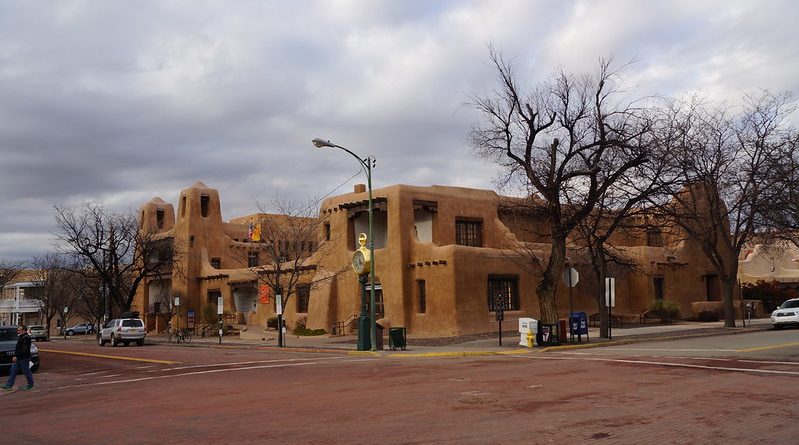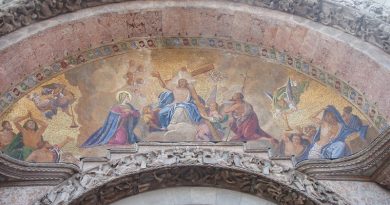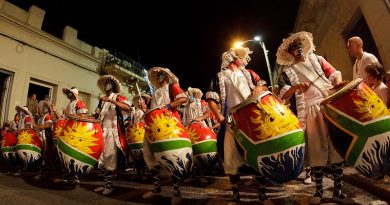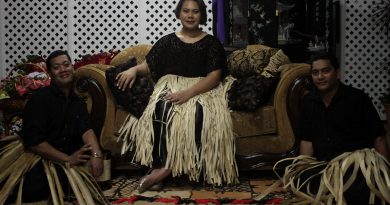The Santa Fe Indian Market
Shopping Essentials
Where: Santa Fe, New Mexico, Southwest USA
When: Annually in August
What’s in Store: Traditional, authentically produced Indigenous American crafts bought direct from the people
Bag a bargain: A sacred spirit Kachina Doll
Where It’s At
Santa Fe can be a shopper’s paradise at the best of times. With its concentration of galleries and works of art for sale, plus Indigenous American influence producing stunning jewellery, woven textiles and pottery, the shopping enthusiast can find a million ways to part with their cash. The only downside is that sometimes, with so much to choose from and so much range in pricing, you may unknowingly end up buying second-rate, imitation goods.
Spotting A Good Buy
The beauty of the ‘Santa Fe Indian Market’ is that artists and stall holders must pass rigorous quality control and authenticity checks before they are permitted to participate in the event. In fact, not only does the art work have to be authentic, but so must the artist – only real Indians are allowed to participate, and entrants must submit to having their family tree and tribal standing checked out. Art experts also conduct on-site inspections throughout the market to ensure that quality control is maintained during the event. The result is a massive display of work that is truly breathtaking. Unfortunately, so are the prices, but better to pay through the nose and have the satisfaction of knowing that not only are you purchasing the real thing but that the middleman has been cut out and you are purchasing straight from the artist.
What Happens At the Market
The market recently celebrated its 80th year. Established in 1922 to encourage continuity in traditional Indian arts and crafts and to provide artists, buyers and gallery owners with a forum, it is the oldest and largest juried Native American art show and market in the world. Held every year – the weekend after the 3rd Thursday of August – the event showcases the work around 1,200 artists from 100 different tribes in around 600 booths, both in and around the town’s central plaza. An approximate 100,000 visitors come from all over the world to meet the artists, to buy or simply to browse and admire (admission is free). Accommodation over this weekend is at a premium, so be prepared to book months in advance.
On the Friday night before the opening of the market, the Southwestern Association for Indian Arts, which sponsors the Indian Market, hosts a preview and awards presentation. To get in to see this, you need to be a member of the Association – it’s well worth paying the $50 joining fee so that you can get a look-in at the best of the show and get more of an insight into Native American arts and crafts.
Of course, the winning pieces announced on the Friday night are often quickly snaffled the minute the market opens on Saturday morning – in fact, most of the best pieces are – and Saturday afternoon often sees stall holders packing up because they have been completely cleared out of stock. Sunday is a bit less frantic, with the opportunity to bargain on unsold pieces – not encouraged by the organisers, but common nonetheless.
What’s In Store
Silver jewelry inlaid with turquoise, ceramics and pottery, which differ in style and design from pueblo to pueblo, sculptures, paintings and drawings as well as woven rugs, blankets and baskets.Kachina dolls symbolise sacred spirits who impact upon the harmony and fertility of the tribes. The dolls displayed at the Indian Market must comply with specific tribal tradition. For example, the Hopi Indians carve the dolls from cottonwood root and present them to the young Hopi girls at the Bean Dance held each February, as a token of their religious initiation into the tribe. Consequently, all Kachina dolls and sculptures displayed by a Hopi Indian at the Market must be of cottonwood root. Zuni Indians historically use cottonwood root and/ or boughs in the making of their Kachinas, so are able to utilise either in their doll works for the market. All must be painted with traditional colours using mineral pigments and any inclusion of feathers in dress must comply with state and federal regulations.
Other restrictions on artwork include an insistence that all items are handmade. Rugs and blankets must be woven on native looms, and there is a preference for natural vegetable and mineral dyes. Jewellery must be handmade of natural materials. With such rigorous controls in place, producing such high quality and authentic work, you really can understand the hefty price tags attached to some of the items.
Even if your wallet is a bit on the lean side, it’s worthwhile and educational just to wander around the market. The distinct styles and traditions of individual pueblos are more striking when showcased side by side, and in any case, there are the occasional bargains to be had if you’re alert and lucky. Aside from the primary activities of buying, selling and exhibiting, there are also native clothing contests, live musical performances and dancing to be enjoyed.
More Information
Websites
Swaia.org
The official organisers’ website, with a schedule of events and profiles of each participating artist, including examples of their work and the opportunity to contact them directly.
Books
Santa Fe Indian Market – Showcase of Native American Art by Sheila Tryk, Photography by Mark Nohl (Tierra Publications 1993)
For the armchair traveller. Stunning photography and lively text enable you to visit the market without being tempted to buy.
main image: Postcard photo of a Santa Fe EMC E1 diesel locomotive at the San Diego station.
Guide By Sarah Rodrigues




